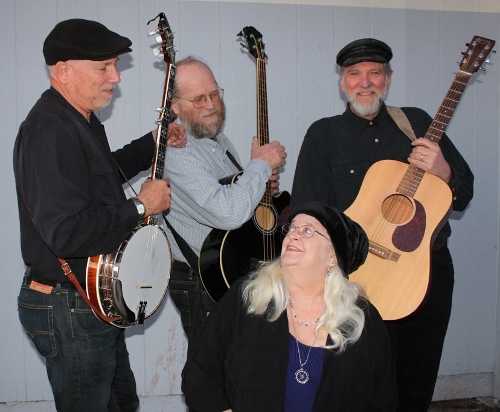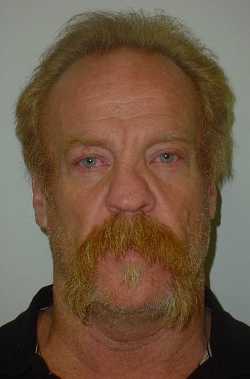LAKE COUNTY, Calif. – In the American Lung Association’s new “State of the Air 2013” report, Lake County continues its tradition of clean air, taking top honors.
The 14th annual report, which can be found at www.lungusa.org , is a national air quality “report card.” It uses the most recent quality assured air pollution data, compiled by the EPA, in 2009, 2010 and 2011.
The report grades counties and ranks cities and counties based on their scores for ozone, year-round particle pollution and short-term particle pollution levels.
Lake County was ranked No. 1 among the Top 25 cleanest counties for year-round particle pollution, an improvement over its No. 8 ranking in 2012 and a No. 6 rating in 2011.
Other California counties making that group this year included Siskiyou, No. 15; Shasta, No. 17; and San Benito, No. 20.
Lake also was among 14 California counties ranked as having low short-term particle pollution and was one of only nine California counties to be listed for cleanest counties for ozone air pollution. It received “A” grades for both categories of air pollution.
Nationwide, the report finds significant progress in the reduction of year-round particle pollution (soot) across the nation, but many cities that ranked among the most polluted had more unhealthy days of high ozone (smog) and short-term particle pollution than in the 2012 report.
Despite that uptick, “State of the Air 2013” shows that the air quality nationwide continues the long-term trend to much healthier air.
“We are happy to report that the state of our air is much cleaner today than when we started the ‘State of the Air’ report 14 years ago,” said Harold Wimmer, national president and chief executive officer of the American Lung Association.
“Even in parts of the country that experienced increases in unhealthy days of high ozone and short-term particle pollution, they still have better air quality compared to a decade ago,” Wimmer added. “But the work is not done, and the Environmental Protection Agency must continue the work necessary to achieve the promise of the Clean Air Act; healthy air that is safe for all to breathe.”
The new report found that more than 131.8 million people in the United States, which equates to 42 percent of the U.S. population, live in counties that have unhealthy levels of either ozone or particle pollution.
Nearly 24.8 million people – or 8 percent – in the United States live in counties that have unhealthy levels of all three: ozone and short-term and year-round particle pollution.
Eighteen cities had lower year-round levels of particle pollution, including 16 cities with their lowest levels recorded.
The report also noted that more cities – four – made the list of the “cleanest cities” than in any previous “State of the Air” report: Bismarck, N.D.; Cape Coral-Fort Myers, Fla.; Palm Bay-Melbourne-Titusville, Fla.; and Rapid City, S.D. To make this list, the cities had to have no days with unhealthy levels of ozone or particle pollution and had to be among the 25 cities with the lowest year-round particle levels.
This year’s report reveals that many places made strong progress, particularly in lower year-round levels of particle pollution, compared to last year’s report.
The American Lung Association said lower particle pollution levels are a direct result of emissions reductions from the transition to cleaner diesel fuels and engines and coal-fired power plants, especially in the eastern United States.
Although year-round average levels for particles are steadily dropping, the reverse is true for short-term spikes in days with high particle counts.
“State of the Air 2013” found that six cities had their worst year ever for short-term pollution spikes since the data started to be collected. Periods of unhealthy particle levels often occur in the winter, as has recently been the case in Fairbanks, Alaska, and Salt Lake City.
In some cities, the particle pollution spikes come from increased burning of wood and other fuels for heat, often from highly polluting indoor wood stoves or outdoor wood boilers.
Ozone is the most common air pollutant Americans breathe, and it has proven to be one of the hardest to reduce.
Most cities with the worst ozone problems made progress with fewer high ozone days, while several places recorded more unhealthy ozone days on average than in 2008-2010.
Los Angeles reported its fewest unhealthy ozone days since the “State of the Air” reports began, but it remains the city with the worst ozone pollution problem. Warmer weather during 2009-2011 may have contributed to the increase.
The nation’s most polluted cities for short-term particle pollution, from one to 10, are: Bakersfield-Delano, Calif.; Fresno-Madera, Calif.; Hanford-Corcoran, Calif.; Los Angeles-Long Beach-Riverside, Calif.; Modesto, Calif.; Salt Lake City-Ogden-Clearfield, Utah; Pittsburgh-New Castle, Pa.; Merced, Calif.; Fairbanks, Alaska; Logan, Utah-Idaho.
Most polluted cities by year-round particle pollution, from one to 10, are: Bakersfield-Delano, Calif.; Merced, Calif.; Fresno-Madera, Calif.; Hanford-Corcoran, Calif.; Los Angeles-Long Beach-Riverside, Calif.; Modesto, Calif.; Visalia-Porterville, Calif.; Pittsburgh-New Castle, Pa.; El Centro, Calif.; Cincinnati-Middletown-Wilmington, Ohio-Ky.-Ind.
Top 10 most ozone-polluted cities, from one to 10, are: Los Angeles-Long Beach-Riverside, Calif.; Visalia-Porterville, Calif.; Bakersfield-Delano, Calif.; Fresno-Madera, Calif.; Hanford-Corcoran, Calif.; Sacramento-Arden-Arcade-Yuba City, Calif.-Nev.; Houston-Baytown-Huntsville, Texas; Dallas-Fort Worth, Texas; Washington-Baltimore-Northern Virginia, District of Columbia-Md.-Va.-W.Va.; and El Centro, Calif.
The report suggests several actions to improve air quality, including cleaning up gasoline and car emissions, funding work to provide healthy air, cleaning up coal-fired power plants and strengthening outdated ozone standards.
2013 State of the Air Report















